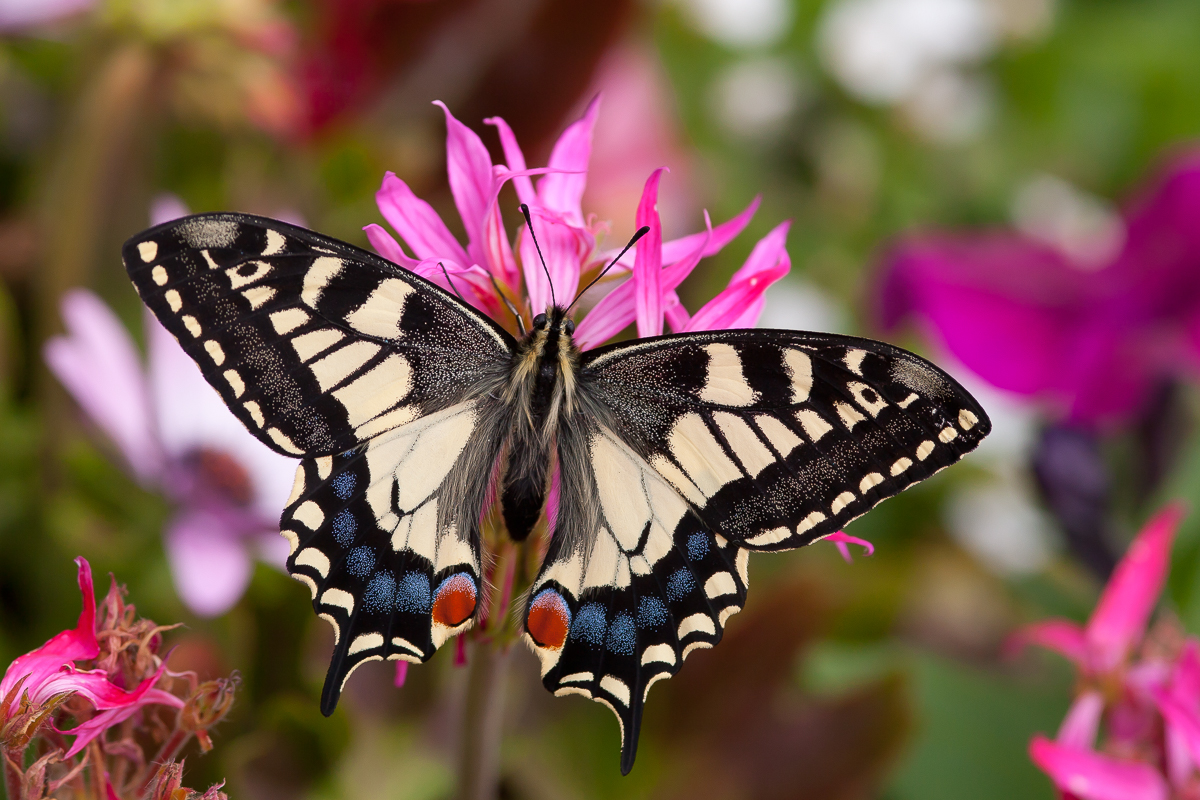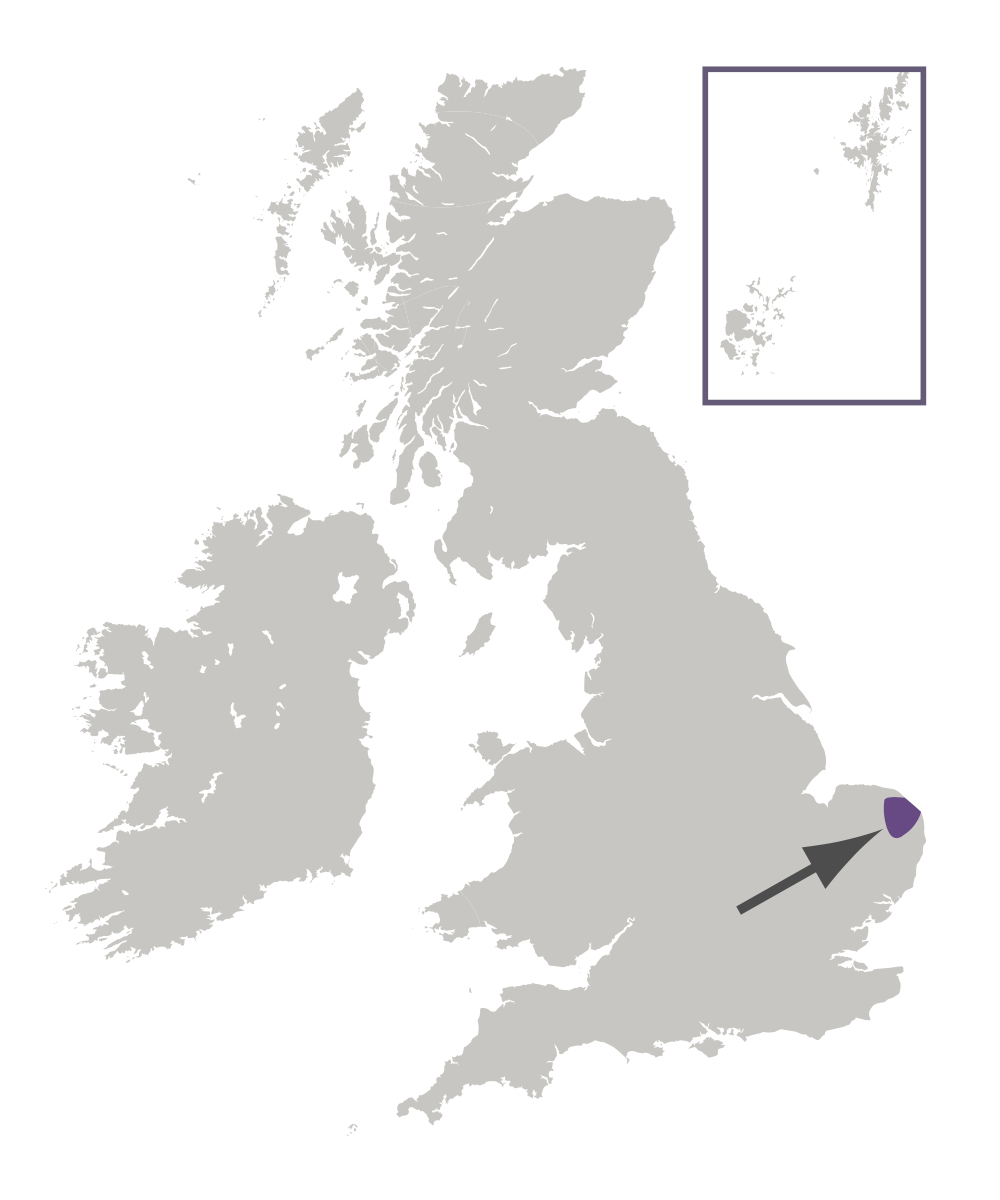
Photo © Peter Eeles
The Swallowtail is our largest native butterfly, and also one of our rarest. This spectacular insect is our only resident butterfly of the Papilionidae family, which is one of the largest butterfly families in the world. The British race is the subspecies britannicus which is confined to the fens of the Norfolk Broads in East Norfolk. This is partly due to the distribution of the sole larval foodplant, Milk-parsley. Seeing the adult butterflies flying powerfully over the Norfolk Broads is a sight to behold, and one near the top of the list of most British butterfly-watchers.
In some years, there are reports of the gorganus subspecies arriving from the continent. This subspecies is less fussy and will use many kinds of Umbellifer, such as Wild Carrot, as the larval foodplant. 2013 was an exceptional year for this subspecies, with sightings from 13 sites across Hampshire, Sussex and Kent, and a single site in Buckinghamshire. These sightings included evidence of egg-laying and the resulting larvae and pupae have been followed through to spring 2014.
This butterfly is often seen flying strongly over the fens. Even when feeding, the butterfly will typically continue to beat its wings as it takes nectar. Females generally mate on the day of their emergence, normally in the morning, and the pair remains coupled for several hours. When egg-laying, the female will fly low over vegetation looking for suitable plants on which to lay. Both sexes rely on nectar, and have a preference for pink or mauve flowers, such as Ragged Robin and Thistle.

The britannicus subspecies inhabits open fens where the larval foodplant, Milk-parsley, is found. Such fens are usually dominated by sedge or reed. The gorganus subspecies is a migrant and can be found almost anywhere, but most frequently on open grassland near the south coast of England.
Adults feed primarily on Bluebell (Hyacinthoides non-scripta), Devil's-bit Scabious (Succisa pratensis), Ragged-Robin (Silene flos-cuculi), Red Clover (Trifolium pratense), thistles (Carduus spp. and Cirsium spp.), Wild Teasel (Dipsacus fullonum) and Yellow Iris (Iris pseudacorus).
The primary larval foodplant is Milk-parsley (Thyselium palustre).
